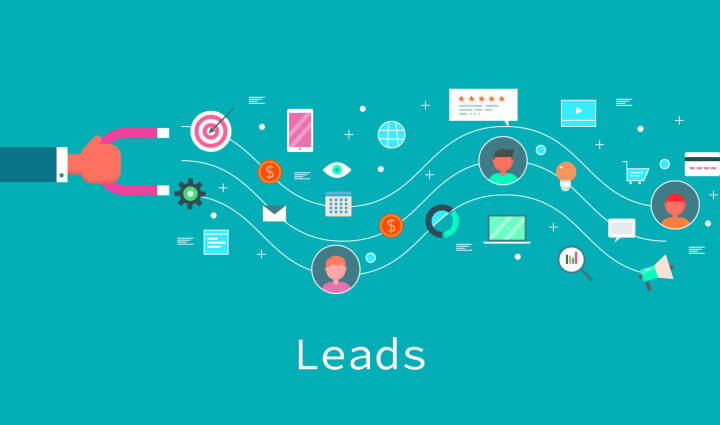Lead Nurturing Best Practices
August-16-2019
Easily half of the leads your marketing team finds aren’t yet sales-ready, but rather than dismissing them, nurture them to build your pool of sales qualified leads. Building trust and cultivating connections with qualified prospects, regardless of where they are in the buyer’s journey, is critical to uncovering quality leads that can be nurtured down the funnel.
As the old saying goes “The money is in the follow-up”! Constant follow-up with potential clients can make a tremendous positive impact on your sales.
Each time you speak with a potential client, you increase the opportunity to showcase your knowledge and expertise, build trust and enhance your relationship. Nurturing leads can be done through sending monthly emails newsletters, and offering advice and insightful content followed with an occasional phone call once every few months.
Tips for Effective Lead Nurturing
Building a relationship with your leads will not only convert them into clients but also keeps them as loyal long-term clients that refer you other prospects and label you as their “go-to guy“ whenever your services are needed.
The following statistics will probably shock you, but it’s a great eye-opening occasion to realize the importance of following up with your prospects:
- 2% of sales are made on the first contact;
- 3% of sales are made on the second contact;
- 5% of sales are made on the third contact;
- 10% of sales are made on the fourth contact;
- 80% of sales are made on the fifth to twelfth contact.
The results between the fourth and fifth contact indisputably show the importance of a consistent follow-up process.
Here are some of the best practices to develop an effective lead nurturing campaign:
- Be Personal
Generic emails are usually deleted within the first 3 seconds. On the other hand, emails that are personally addressed to the prospects name and interests, perform much better. The more personal your email is, the higher the chance of receiving a response.
Personalized emails generate up to 6 times higher revenue than non-personalized emails.
For example, if you are a real estate agent and wanted to send a follow-up email to a prospect who is in the market to buy a property, make sure that your email includes specific details pertaining to the prospect needs such as the type of property and area he was looking to buy in, as shown in the example here below.
Hi Steve,
The real estate market is looking very good in your area, and some amazing opportunities are now available to you. If you have been thinking about buying a property, now is the time to act. I have compiled a few just listed detached homes for sale in Dorval, Montreal selling below market price.
Let me know if you are interested in an overview of those properties, and how you can benefit from this opportunity.
Thanks,
Tom Anderson
- Educate
Educating is one of the best ways to sell and is, without doubt, one of the lead nurturing best practices. One of the most crucial steps in the process of closing the sales cycle is educating your prospects and giving them the information they need to achieve their objective.
- Don’t overdo it
A sure way to irritate a prospect is to contact them every day. Being persistent does not mean that you should send emails every day. The sales process takes time and could take weeks or sometimes months.
- Friend your prospects on social media
Social media much like direct calls and emails is another way to engage and reach out to your potential customers. The most ways you are able to interact and engage with your prospects, higher are the opportunities you have to educate and nurture your leads.
Try alternating how you present your data with videos, blog posts, podcasts, webinars and infographics.
- One step at a time, build your lead nurturing strategy:
“It doesn’t have to be a tremendous leap from whatever you’re doing now (likely a sort of treating all leads equally) to implementing a comprehensive lead-management strategy. Achieving a successful nurture-marketing strategy (let alone the next step to closed-loop) should be viewed as a multistep process for these firms.” (Heinz)
- Identify nurture-able leads carefully
Determine which of your contacts are ‘nurture-able.'” What is the size of the population of leads and contacts that you can nurture without complicating sales or customer support efforts (if you want to nurture current accounts)? If it makes sense, include lapsed clients in the mix. It’s important to note that the purpose here isn’t to create the largest database possible.
Identify your perfect lead and treat them differently: Create a clear definition of an ideal prospect and divide it into two categories: do they qualify or do they not? Is it necessary, for example, for an ideal candidate to come from a specific size of company? Is it from a specific named contact? Is it from a certain industry? Set two to three criteria and begin triaging leads based on them.
I’d build nurturing activities that connect the sales and buying cycles. Need, learn, assess, negotiate, purchase, implement, and promote are the steps in a typical buying cycle.
Conclusion
The process of generating leads and nurturing them may sound complex, but it’s well worth the effort.
It will take some time to implement all these lead nurturing practices, but after making the needed adjustments, you will start getting the conversion rates you want.
